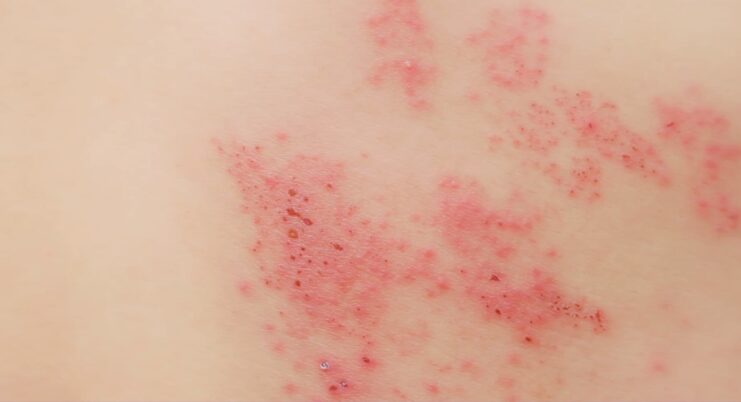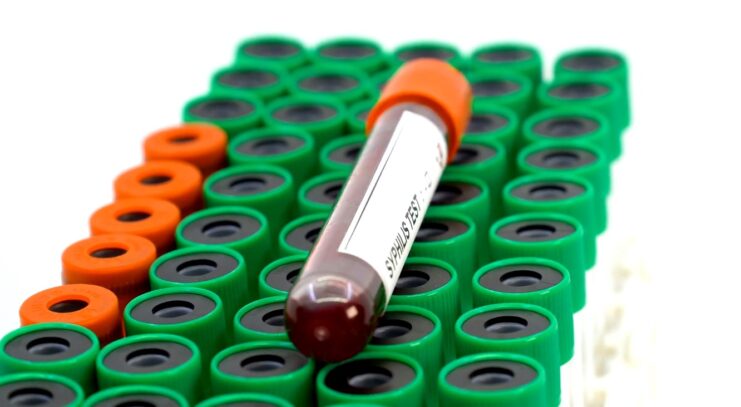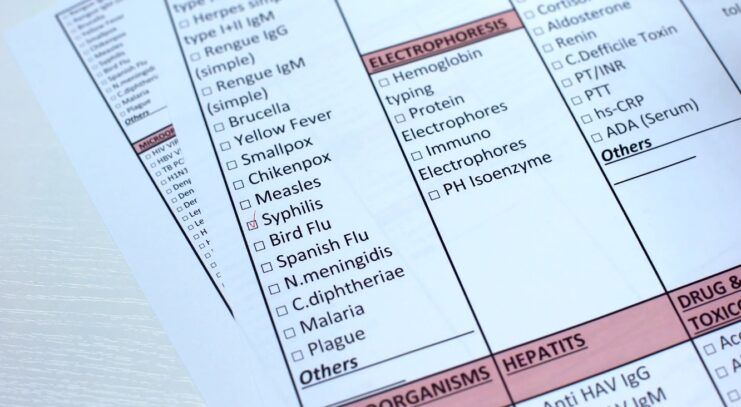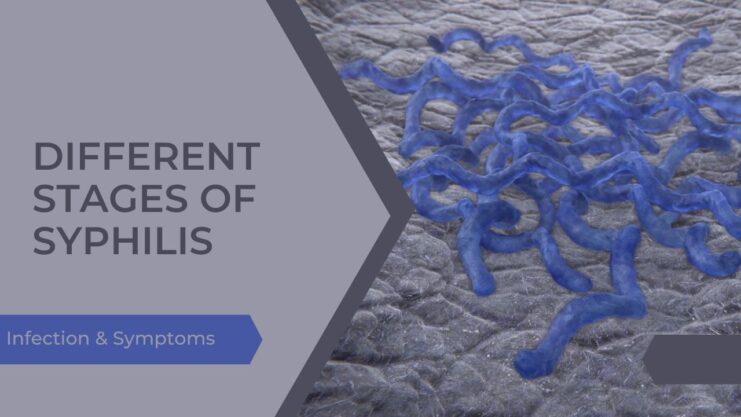Syphilis, a sexually transmitted infection caused by the bacterium Treponema pallidum, has been a significant public health concern for centuries. Its progression is marked by distinct stages, each with its own set of symptoms.
Understanding these stages is crucial for early detection, treatment, and prevention. In this comprehensive guide, we’ll delve deep into the various stages of syphilis infection, shedding light on its symptoms and offering valuable insights for both medical professionals and the general public.
Syphilis is more than just a sexually transmitted disease; it’s a complex bacterial infection that can have long-term health implications if not treated promptly. Historically, it has been called the “great imitator” because its symptoms can resemble many other diseases.
Historical Overview
The history of syphilis is as intriguing as its clinical manifestations. Believed to have been brought to Europe from the New World in the late 15th century, it quickly spread across the continent, causing widespread panic and morbidity.
- 1495: The first recorded outbreak in Europe.
- 16th Century: Recognized as a distinct disease separate from leprosy and other conditions.
- 1905: The causative bacterium, Treponema pallidum, was identified.
- 1940s: Penicillin was found to be an effective treatment.
Transmission and Risk Factors
Syphilis is primarily transmitted through direct contact with syphilitic sores, which can appear on the external genitals, in the vagina, around the anus, or in the rectum. However, it can also be transmitted from mother to child during childbirth.
- Sexual Contact: The most common mode of transmission.
- Shared Needles: Among drug users.
- Blood Transfusion: Rare, but possible.
- Mother to Child: Known as congenital syphilis.
Primary Stage of Syphilis

The primary stage of syphilis is marked by the appearance of a single sore, but there can be multiple sores. This stage offers the first tangible sign of infection, but it can easily go unnoticed due to its painless nature.
Appearance of the Chancre
The hallmark of primary syphilis is the chancre—a firm, round, and painless sore. It appears at the spot where the bacteria entered the body. This sore may be hidden within the vagina, under the foreskin, or inside the rectum, making it easy to miss.
- Onset: 3-4 weeks after infection.
- Duration: The sore lasts 3-6 weeks and heals on its own.
- Location: Can appear anywhere the bacteria entered, often on or near the genitals, anus, or mouth.
Symptoms and Diagnosis
While the chancre is the most recognizable symptom, there can be other signs during the primary stage. Swollen lymph nodes near the site of the initial infection are common. Blood tests can confirm the presence of the bacteria, but they might not always detect it in the primary stage.
- Lymphadenopathy: Swollen lymph nodes are often painless.
- Blood Tests: Can detect antibodies to the syphilis bacteria.
- Physical Examination: A doctor may diagnose syphilis by examining the sore.
Secondary Stage

If the infection isn’t treated during the primary stage, it progresse
s to the secondary stage. This stage is characterized by skin rashes and mucous membrane lesions.
Rashes and Skin Manifestations
The rash of secondary syphilis can appear as rough, red, or reddish-brown spots on the palms of the hands and the bottoms of the feet. However, rashes with a different appearance can occur on other parts of the body.
- Widespread Rash: Can be so faint that it’s unnoticed.
- Mucous Membrane Lesions: Sores in the mouth, vagina, or anus.
- Hair Loss: Patchy “moth-eaten” hair loss can occur.
Other Symptoms
Secondary syphilis can also manifest in a variety of other symptoms, making it a truly systemic disease. These symptoms can be mild or severe and can come and go over time.
- Fever and Malaise: Feeling generally unwell.
- Weight Loss: Unintended and unexplained.
- Muscle Aches: Can be widespread or localized.
Latent Stage of Syphilis

The latent stage, often referred to as the “hidden” stage, follows the secondary stage of syphilis. During this phase, there are no visible symptoms, but the bacteria remain in the body. This stage can last for years, making it a silent threat.
Early and Late Latent Phases
The latent stage is divided into two phases based on the duration since infection:
- Early Latent Syphilis: This phase occurs within the first year of infection. Relapses of secondary stage symptoms can occur during this time.
- Late Latent Syphilis: This phase occurs after the first year of infection. There are no symptoms, but the disease can still be transmitted from a pregnant woman to her baby.
Diagnosis and Implications
Even though there are no symptoms during the latent stage, blood tests can still detect the presence of the bacteria. It’s crucial to diagnose and treat syphilis during this stage to prevent progression to the more severe tertiary stage.
- Blood Tests: Remain positive and can be used for diagnosis.
- Potential for Progression: If untreated, up to 1/3 of individuals will progress to the tertiary stage.
Tertiary Stage of Syphilis

The tertiary stage is the most severe and can occur 10-30 years after the initial infection. It can cause severe medical problems, affecting multiple organ systems.
Gummas and Organ Damage
Gummas are soft, tumor-like balls of inflammation that can occur anywhere in the body. They can cause significant damage to organs and tissues.
- Skin and Bones: Gummas can lead to open sores on the skin or bone destruction.
- Internal Organs: The liver, heart, and other organs can be affected, leading to severe complications.
- Neurological Implications: Neurosyphilis can cause a range of symptoms from headache and behavioral changes to paralysis.
Cardiovascular Syphilis
This form affects the heart and blood vessels, particularly the aorta. It can lead to:
- Aortic Aneurysms: Bulging of the aorta which can rupture, leading to life-threatening bleeding.
- Valve Disease: Damage to the heart valves, affecting blood flow.
- Coronary Artery Disease: Narrowing or blockage of the coronary arteries.
Neurosyphilis
Neurosyphilis refers to the infection and damage of the nervous system by the syphilis bacteria. It can occur at any stage of the infection.
Symptoms and Presentation
The symptoms of neurosyphilis can vary widely based on the part of the nervous system affected:
- Meningitis: Inflammation of the protective membranes of the brain and spinal cord.
- Stroke: Caused by reduced blood flow to parts of the brain.
- Dementia: Cognitive decline and behavioral changes.
- Vision Problems: Including blindness.
Diagnosis and Treatment
Early detection and treatment are crucial to prevent irreversible damage:
- Lumbar Puncture: A spinal tap can detect the bacteria in the cerebrospinal fluid.
- High-Dose Penicillin: Administered intravenously, it’s the preferred treatment for neurosyphilis.
- Regular Follow-Up: Monitoring for symptom resolution and negative blood tests.
Final Words
Syphilis, often dubbed the “great imitator,” is a testament to the intricate ways in which infections can manifest in the human body. Its stages, each with unique symptoms, highlight the importance of awareness, early detection, and timely treatment.
As we navigate the complexities of modern medicine, understanding such age-old diseases remains paramount. Let this guide serve as a comprehensive resource, illuminating the path towards better health and well-being.
Related Posts:
- Vaginal Infection: Symptoms, Causes, and Prevention
- When and How to Test for Syphilis: Empower Yourself…
- Balanitis Explained: Everything You Need to Know…
- Bacterial Vaginosis: Causes, Symptoms, and Treatment Options
- How to Recognize and Treat STD Symptoms in Women:…
- Hemorrhoids: Common Lumps & Bumps - Causes,…












